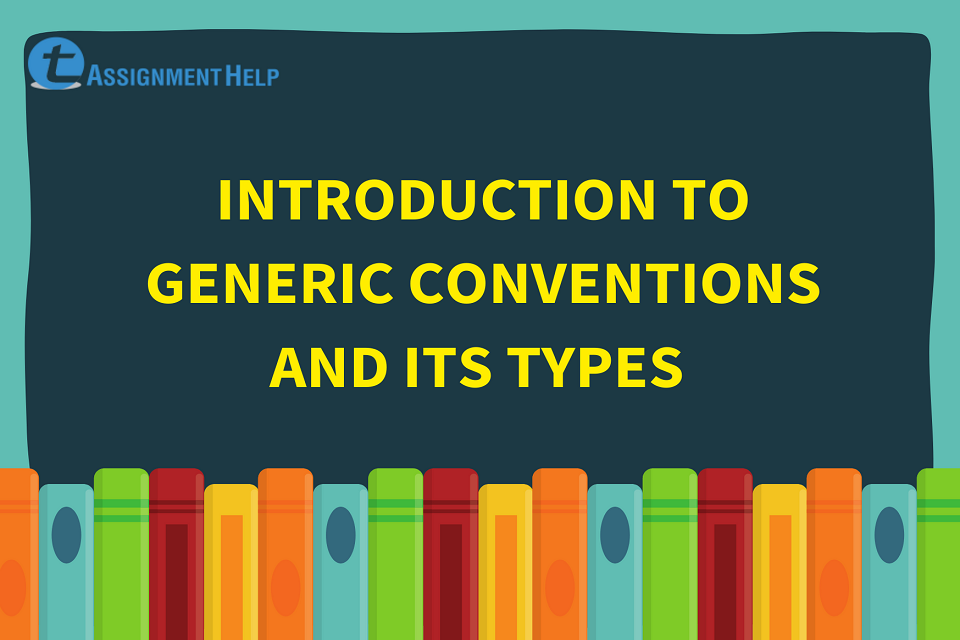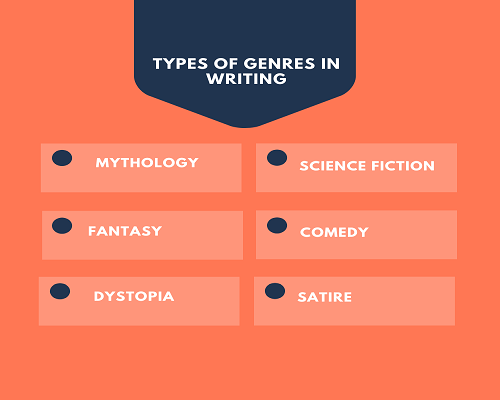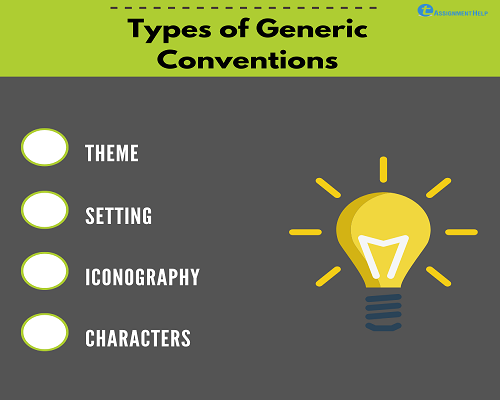Nowadays, students are finding it hard to understand the basic concepts and theories provided in their academic literature. This problem is faced by the students because of their excessive focus on mugging up the concepts and not trying to relate it with their real-life incidents with their mental creativity. Having a general idea of generic conventions will help in understanding the context provided and in drafting creative content.
We have introduced this article to generate an overall idea of generic conventions. This article would be a great help to the students who are trying to master the concepts of generic conventions. Here we will discuss the definition of the generic conventions in the first section of the article. In the later section of the article, the various kinds of generic conventions are discussed methodically.
Subscribe our YouTube channel for more related videos
Definition
The feature of literature or a piece of art that aids to put it in a specific class or genre is termed as generic conventions. In other words, they are the traits that are being portrayed by the context classifying it into a genre. Understanding the concept of generic concepts is a very easy task. For your convenience, just try to recall the storyline of a cinema or novel and attempt to recollect the factor by which your memory was connected to it. You could connect to the story by asking yourself the questions like “What are the characteristics which made you remember the personalities?”, “How do you contemplate the feelings of the recalled storyline?”.
While answering the questions above, you will come to know that you have categorized these storylines using some factors unwillingly. Suppose you have thought about some horror storyline. The memoirs coming to your mind will be very horrifying scenes or incidents in the story like dead bodies, ghosts, nerve chilling music, etc. The scenes must have made a horrifying impact on your mind. The trait discussed above is generally called generic conventions. The generic conventions are mostly helpful for those students who are pursuing their academic careers in arts or literature subjects.
From the audience’s point of view, they are very significant in making their preference for movies or literatures. The classification of the work by generic conventions will make it easy for a person in audience to make his desired choice without any confusion. This enables the elimination of undesired works without reading it, hence allowing the reader to make a better choice. The generic conventions also make the task simple to the writers, as it will draw the attention of the intended audience.
We believe that you have understood the basic idea of generic conventions. Let’s take a short glimpse of various kinds of genres. If you are new to the concept of generic conventions, this section will help you in flawlessly understanding the whole concept, even though you have no interest in literature or movies.
Before we describe various kinds of the genre to you, let’s go through the meaning of genre. If said in simple words the classification or type of the art or literature is termed as a genre. For better grasp we have given the list of some typical genres below.
- Mythology
- Science fiction
- Mystery
- Tragedy
- Adventure
- Fantasy
Some subsections of the above genres are
- Tragic comedy
- Drama
- Action
- Horror
- Satire
- Romance
- Dystopia
- Young Adult Fiction
As reading this list, you may have got the basic idea of genre. Now we are going to discuss various genres in detail for having a better perception.
Tragedy: In this genre, the pieces of literature are usually very serious and gloomy in theme and the climax would be an emotional disaster. Generally, the theme would be centered on a character that bears unforeseen bad luck. The story mainly revolves around the terrible events a protagonist has gone through in a very grave mood. The kinds of literature in this genre are intended to bring the viewer or the reader in an emotional and baffling stage with serious questions rising in their minds.
Mythology: This genre is not strictly defined since it is very complex and much of the field remains uninvestigated in this field. Mythology is a greek word that originated from the root words “Mythos” and “Logos”. Where logos means the vernacular or the language used and the Mythos refer to the story propagated by the people. This is mostly the fables propagated among a certain group of people following certain cultures which are most pious.
The similar stories are termed as myths, and the collection of myths is called mythology. The culture of certain demography and its geography plays a crucial part in the theme of the mythology. Most of the mythologies are very old and discusses the beginning of the human race, philosophical account on life, different cults followed, etc. The mythologies are typically pious and the characters would be supernatural. They are intended to provide certain philosophical messages to the human race.
Science fiction: Just like mythology science fiction to is very difficult to describe. It is the genre of literature of art which deals which portrays a fiction story on science and technology. In this genre, the storyline follows the theme of partially true and somewhat fictitious theories specified in science. In most of the works of literature, a plot is created amalgamating the conditions of the present and the imaginary past. In other terms, the genre of science fiction could be termed as a separate section of literature that explores the human response to the transformation in technology. In the past, the science and technology has explored a lot of robots, space ships, and time machines.
Mystery: The origin of the word mystery was from the Latin word mysterium which meant a secret thing. The kinds of literature in this genre typically focus on themes like unsolved crime cases, mysterious situations, situations generating anonymity, etc. In these works, the story revolves around exposing a criminal which is normally termed as a whodunit scenario.
This genre empowers the writer to cover both the range of real-life and that of supernatural aspects. Thus, helping the writer to attain exceptional innovative approach.
Adventure: The name of this genre was derived from a French word adventure which meant destiny. In modern English adventure is probably meant as an outstanding voyage, encounter, incident, experience etc. The works in this genre revolve around a protagonist who accidentally encounters the adventurous situations. The protagonist is generally portrayed very brave and portrayed to be very dangerous situations, executing a narrow escape, a great display of intelligence, etc.
The feeling of adventure is extremely subjective since it occurs in everyone’s mind. It is the portrayal of doing something tough in an exciting and inspiring way.
Fantasy: Like mythology, this term had also its origin from the Greek language. The works in this genre ponder mainly on the unreal components like that of imaginary creatures, fictional heroes, monsters, magical illusory, etc. This genre has a strong similarity with that of the literature in the mythological genre. It is the supernatural and made up elements that make the basic plot of the storyline. It is the most popular genre among all and had a huge acceptance among the audience of movies, video games, television, literature, etc. It is in the literature where the scope of fantasy is explored thoroughly.
This genre normally portrays a deviation from the conventional dogma of the world’s perception. The fantasy tries to uncover the areas of which humanity has never thought about. Fantasy can not be explained in mere words, it is very subjective and vast for each individual.
Various kinds of generic conventions
THEME: It is the key view or idea put forward in literature which may be depicted directly or indirectly. It is the central topic of the work which can be specified in a single word, for instance, rage, love, solitude, etc. it may be possible that single literature pertains to more than on theme. To understand the theme of the work the reader has to go through the content given.
The concept of a theme can be classified into the sets of thematic concepts and thematic statements. The thematic concept mentions the understanding and grasp of the concept while the thematic statement provides knowledge of the topic in the question.
SETTING: It is the type of generic convention in which a major story line or the plot is being built up. The selection of the right setting is imperative for well-organized artwork. If the setting is not given proper effort then the whole effort for building work will end up in a fiasco.
It is the setting that provides the main attributes like emotions, concept, tone etc in the work.
ICONOGRAPHY: This generic convention deals with the recognition, categorization, narrative, and elucidation of theme, visuals context and symbols. This genre also identifies the concepts and imaginations used by a writer in his work. In the 16th century, the works published were classified in the catalogs of symbols and emblems recovered from the old literal works. These were converted into pictorial terms in the previous iconographical studies.
CHARACTERS: Of all these generic conventions, the character bears the most importance. Any animated thing or person in the storyline could be a character. A character may be an animal, a human being, any animated thing, creature, etc. It is using the characters that writers try to convey their ideas. They are subjected to action and conversation for the progress of the story. A story would be meaningful, although it consists of only one character. In the course of the story, the character displays his conflict with the inner self or any other exterior factor or situation. The main character of a story is termed as protagonist. It is around the protagonist that the story is built up using other characters.
Normally there will be two major characters in the story. One of them being a protagonist and other being an antagonist. The protagonist part is most often played by the hero and the antagonist is the one who is an adversary and created challenges and hurdles to the protagonist, also termed as villains.
If said in detail the protagonist is the chief character of the storyline near who the all story revolves. This character brings the story forward and it is his encounter with the problems created with the other character which brings life to the story. While the antagonist, which may be a single person or a group, is the character which poses danger and difficulties to the protagonist. It is also possible that the real antagonist is posed as the center of the story and hence portrayed as a protagonist in the result.
Conclusion
We hope that we have to provide more than enough data about the general conventions. This article has tried to answer all the probable questions which may have raised in a student’s mind regarding the general conventions. Since we have covered all the possible aspects, we are concluding this article here. We have discussed the concept of generic conventions in the beginning and then later various kinds of the genre were discussed. We have taken this approach in this article so that even a below-par student should understand the basics of generic conventions. It should be kept in mind that just having the theoretical concept of the generic convention is not enough. Try to develop practical knowledge of this concept.







